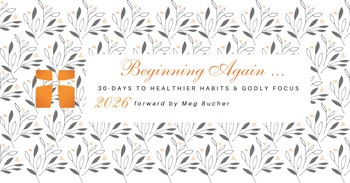As a home baker and a devout lover of carbs and shared meals, the phrase “breaking bread” has the ability to stimulate all of my senses. In that one phrase, I can hear the crackle of a freshly baked sourdough loaf, I can feel the ache of hunger, and can smell the promise of satisfaction. I can see familiar, smiling faces around me, and can taste the goodness of a broken loaf of bread. Bread is fraught with Biblical imagery that is meant to spark all of the senses that God has given us through which we can know Him better. In Scripture, bread is used to mean more than simply the food we ingest. Much more, in fact, as it is applies to the very body of Christ, which was broken for us. When the Bible talks about “breaking bread,” it does so both in the context of a shared meal and in reference to the breaking of our Savior’s body.
What is the Biblical Meaning of "Breaking Bread"?
Scripturally, “breaking bread” refers both to the literal action of tearing bread apart (an act which we will learn has a deep spiritual significance) and to the more general activity of eating food, typically in fellowship with others. References to eating in general and to the consumption of bread in particular are found all throughout Scripture, beginning in the book of Genesis and ending in Revelation. From the start, God commanded man to eat and be filled. The food that He provided was freely offered as a gift. Eating of it resulted in everlasting life and a humble recognition that to exist meant to depend on something outside of oneself.
But even in the Garden of Eden there were boundaries. There was one tree among the many that Adam and Eve were told not to eat from. They were free to choose love, faith, and obedience, or self-sufficiency and pride. They, of course, chose the latter. The sin that severed man’s communion with God was an act of eating.
Then, in the book of Exodus, the breaking of bread plays a significant role in the last of the ten plagues. When the Israelites were freed at last from Egyptian oppression, and those who obeyed God’s command to paint their doorpost with the blood of an unblemished lamb were spared the death of their first sons, they were commanded to eat unleavened bread. Every year after, they were to celebrate the Passover and the Feast of Unleavened Bread. Through the physical act of breaking bread together in commemoration of God’s deliverance, their bodies and minds would remember as one the faithfulness of their God and the solemn price of their freedom. After their deliverance, the Israelites were fed by the hand of God with manna in the wilderness. It was another reminder that self-sufficiency is an illusion and that they had a God who cares for them. And yet, they, too, would choose both physical and spiritual hunger through pride and disobedience.
Centuries later, Jesus came onto the scene, entering into the story of a people who still ritually indulged in the breaking of bread but hardly knew what it meant to eat and be filled. Understanding their physical and spiritual lack, Jesus offered them bread that would satisfy both. “I am the bread of life,” Jesus said, “he who comes to Me will not hunger, and he who believes in Me will not thirst” (John 6:35). This is where we find the true spiritual significance of breaking bread. In Jesus’s final hours before His crucifixion, he dined with His closest disciples and further established the significance of the symbolism of bread. “When He had taken some bread and given thanks, He broke it and gave it to them, saying, “This is My body, which is being given for you; do this in remembrance of Me” (Luke 22:19).
Jesus’s body was broken on the cross, and his blood poured out. A greater deliverance than the Israelites had previously known was on the horizon. Again, it was to be celebrated with the breaking of bread. In the books of Acts and 1 Corinthians, we find mention of this practice as the early church is being established.
Where Do We See Breaking Bread in the Life of Jesus?
Of Jesus’ many miracles, one of the most well-known involved the breaking of bread. In all four Gospels, we find an account of Jesus feeding thousands with only five loaves and two fish. Notably, this is the only miracle besides the resurrection that is found in all four Gospels. Matthew and Mark are the only two who recorded the “feeding of the 4,000” in their accounts of Jesus’ life.
In both occurrences:
- Jesus had been feeding the masses with spiritual truths when His disciples noted that, though their spirits were full, they needed physical bread to satisfy their hunger.
- Jesus, filled with compassion, received the humble offering of a child and multiplied it.
- “He took the five loaves and the two fish, and looking up toward heaven, He blessed the food, and breaking the loaves He gave them to the disciples, and the disciples gave them to the crowds” (Matthew 14:19).
- Everyone ate until they were satisfied, with an abundance left over.
An even more well-known moment in Jesus’ life than the feeding of the masses is the Last Supper, where Jesus took bread, gave thanks, and likened His body—soon to be broken for the salvation of the world—to the bread that was being broken in His hands. His words would have reminded His followers of His conversation with the religious leaders after the feeding of the 5,000:
- “I am the living bread that came down out of heaven; if anyone eats of this bread, he will live forever; and the bread also which I will give for the life of the world is My flesh” (John 6:51).
- While His listeners struggled to understand, Jesus continued, “He who eats My flesh and drinks My blood abides in Me, and I in him” (John 6:56).
Throughout His ministry, Jesus used the symbolism of bread to teach that there is no life apart from Him. Just as food sustains the body, Christ alone sustains the soul. Harkening back to the Garden of Eden, Jesus once again used food as a means of offering eternal life. His disciples would have recognized the significance of this moment: eating bread is an act of taking something in and making it part of oneself. In the same way, salvation means Christ becoming a part of us.
Paul expresses this truth in Galatians 2:20: "It is no longer I who live but Christ who lives in me; and the life which I now live in the flesh I live by faith in the Son of God, who loved me and gave Himself up for me."
In remembrance of His sacrifice and the final meal He shared with His disciples before His crucifixion, believers today take communion. Doing so in fellowship with others reminds us:
- Of Christ’s sacrifice and the price paid for our salvation.
- Of our dependence on Him, breaking the illusion of self-sufficiency.
- Of our unity as believers, all sustained by the same source of life.
- Of the abundance freely given to us through Jesus Christ.
This sacred act is an invitation to reflect with gratitude, echoing the words of the Psalmist: "Taste and see that the Lord is good; blessed is the one who takes refuge in Him" (Psalm 34:8).
Where Do We See Breaking Bread in Early Christian Communities?
The formation of the early church is recorded in the book of Acts. In it, we find the fulfillment of God’s initial command to “be fruitful and multiply” through the expansion of hearts affected by the good news of the gospel. As communities are being formed, there are three common activities that anchor their fellowship: devotion to the apostles’ teachings, “the breaking of bread and prayer” (Acts 2:42). Here, Luke is likely referring both to the act of communion and to a regular eating together as the body of Christ. Later in the book of Acts, it is noted that Paul and the disciples that he was traveling with broke bread with Christians during their short time in Troas (Acts 20:7). This mentioning of “breaking bread” together with believers in Troas displays the regularity by which this took place in the lives of the early Christian Communities.
The act of breaking bread, specifically in regard to the taking of communion, is discussed by Paul in his letter to the Corinthians. Thus, we can deduce that it must have been a foundational part of their communal lives, just as it was for the other early Christian communities. In his letter, Paul warns the Corinthian believers that, “whoever, therefore, eats the bread or drinks the cup of the Lord in an unworthy manner will be guilty concerning the body and blood of the Lord” (1 Corinthians 11:27).
What is the Symbolism of Breaking Bread?
The symbolic effect of breaking bread should not be lost on believers today. In our eating, it would do us well to remember that, like Adam and Eve, and the Israelites in the wilderness, we are all dependent on a source outside of ourselves in order to live. We are not independent, self-sufficient people, but are entirely interconnected and in need of one another and, more profoundly, in need of God. Thus, in the breaking of bread, we should carry with us a remembrance of the abundance that Christ made out of a meager sacrifice in order to feed the masses, and should carry forth an attitude of grateful giving to others, trusting that, as we offer up our own sacrifice in the sharing of what little we might have, Christ will multiply it and use it to feed both hungry souls and bodies.
Moreover, in the breaking of bread, we must remember we would have no life if not for the sacrifice of another. Christ’s body was broken so that we may live. Carried within the loaf of freshly baked sourdough that is sitting on my counter is a reminder that each day is a gift of grace that I have done nothing to earn but which has been freely given to me by the Giver of life. The symbolism of Christ’s body, broken on the cross, does not have to stay within the confines of formal communion, but it should not be taken lightly when believers gather together to eat and drink as one in remembrance of what Christ has done for us. When taken together, we are reminded that there is no distinction in God’s Kingdom but “Christ is all, and in all” (Colossians 3:11), and each of us are wholly indebted to a gracious God for the fact we awoke with breath in our lungs and bread on our tables.
Further Reading
How Can Christians Practice the Breaking of Bread Together?
What Should Christians Remember about the Breaking of Bread?
What is the Significance of Bread in the Bible?
Photo Credit: ©iStock/Getty Images Plus/KucherAV




.jpg)